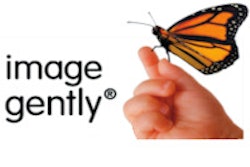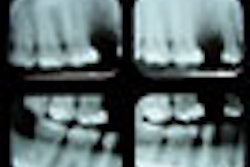The American Academy of Oral and Maxillofacial Radiology (AAOMR) has become the first in organized dentistry to join the Image Gently Pediatric Alliance, the academy announced.
The Image Gently campaign was initiated in 2008 by the Society for Pediatric Radiology, the American College of Radiology, the American Society of Radiologic Technologists, and the American Association of Physicists in Medicine as a national initiative to educate providers of pediatric imaging care about the importance of "child sizing" radiation doses.
The campaign's central message is that children are believed to be more sensitive to radiation received from x-ray imaging scans than adults, and that cumulative radiation exposure to their smaller bodies could, over time, have adverse effects. Therefore, practitioners, including dentists, who perform imaging exams on children are urged to:
- "Child size" the scan to reduce the amount of radiation used.
- Use professional judgment to determine when to image:
- Scan only when necessary.
- Scan only the indicated region.
- Scan once; multiphase scanning is rarely helpful.
- Be a team player:
- Involve assistants to optimize scanning to establish exposures that are as low as reasonably achievable (the ALARA principle).
- Work with assistants to explain the protocol to be followed for the individual being examined.
- Involve health physicists to establish pediatric x-ray techniques.
Too much misinformation continues to be directed at the dental profession, especially through articles in the dental tabloids by folks who are not radiologists and have no special background or knowledge about radiation measurement and radiation biology, according to the AAOMR. The FDA has designated x-radiation to be a known carcinogen, so its use should be minimized to situations in which the imaging performed will have a high probability of positively impacting on treatment selection and outcomes.
This is especially the case when children are to be imaged. "Cherry-picked," and often totally irrelevant comparisons, of radiation dosages should not be taken to construe that radiation dose can be ignored, the AAOMR cautioned. For example, the range of doses for a particular imaging modality is dependent on the field-of-view examined, the length of the exposure, other imaging parameters, and even the brand of machine. A dosage range for one small field-of-view for a short exposure time should not be extrapolated to all fields-of-view on all systems for a given modality.
In 2006, U.S. physicians performed about 4 million pediatric CT scans -- triple the number from five years earlier. The use of cone-beam CT in dentistry also is on the rise, including in orthodontics where the average patient is of child age. As technology evolves, the Image Gently campaign will strive to ensure that x-ray protocols for pediatric imaging are keeping pace and that use follows evidence of need, the AAOMR noted.
The Image Gently campaign's "radiation matters" theme drives home two fundamental concepts: More imaging is usually not better, and the effects of pediatric imaging last a lifetime. Correct dosage is key, the AAOMR noted. Just as the appropriate dose of an antibiotic given to a child differs from the dose given to an adult, a small child needs a much smaller radiation dose than an adult.
The Image Gently campaign initially targeted three audiences. The first were radiologists, medical physicists, and technologists who primarily work in adult hospitals or imaging centers and who image children as a very small part of their patient volume. Second, were referring emergency room physicians, pediatricians, pediatric orthopedists, and other physicians -- including dentists, the AAOMR noted. Once the professional core is educated, the campaign will reach out to parents.
Copyright © 2011 DrBicuspid.com



















